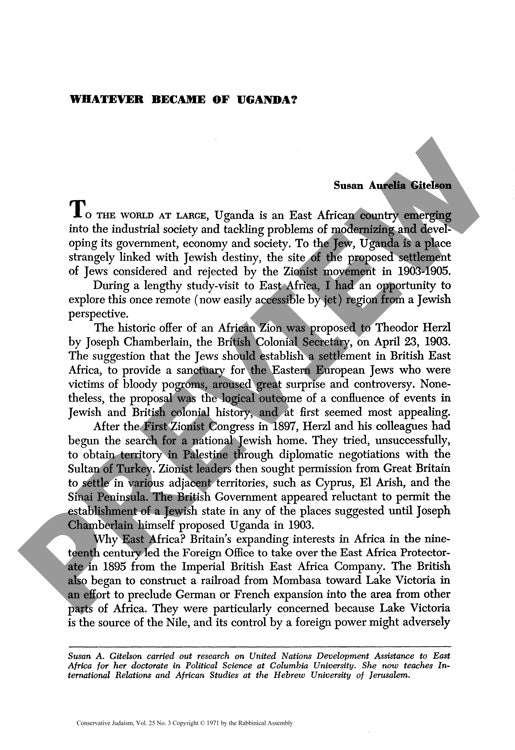Whatever Became of Uganda
Couldn't load pickup availability
A largely forgotten episode in Jewish history, the 1903 "Uganda Proposal" marked a critical turning point when British Colonial Secretary Joseph Chamberlain offered East African territory as a potential Jewish homeland to Theodor Herzl. Drawing on archival research and year-long ethnographic fieldwork, this investigation reveals how the proposal - which actually designated land in present-day Kenya - emerged from an alignment of British colonial ambitions and urgent Jewish refugee needs following Eastern European pogroms. While the Zionist movement ultimately rejected the offer in 1905 after a negative survey mission, the controversy helped crystallize the movement's commitment to Palestine. Today, three distinct Jewish populations inhabit East Africa: roughly 100 established Kenyan Jewish families, rotating Israeli diplomatic and technical personnel, and the indigenous Bayudaya Jewish sect in Uganda. Research methodology combined historical analysis of primary sources with participant observation across Kenya, Uganda, and Tanzania. The findings suggest that although the Uganda proposal provided important diplomatic leverage for the Zionist movement, any attempted Jewish settlement in East Africa would have faced severe obstacles, from the absence of historical connections to inevitable tensions with African nationalism during decolonization.

More Information
-
Physical Description
-
Publication Information
Published 1971
ISBN
-
Publication Credits
Susan Gitelson

